Material Syntax called for the investigation of common materials in the search of new capacities and application possibilities for assembly and light modulation.
The exercise sought to provide an introduction to methodologies commonly used in design research, such as, documentation of samples, standardized data and empirical material studies. The class was open graduate and undergraduate students who explored a wide variety of materials: from wax to drinking straws. This article features some of the final working prototypes produced by the class.
Instructor: David Correa
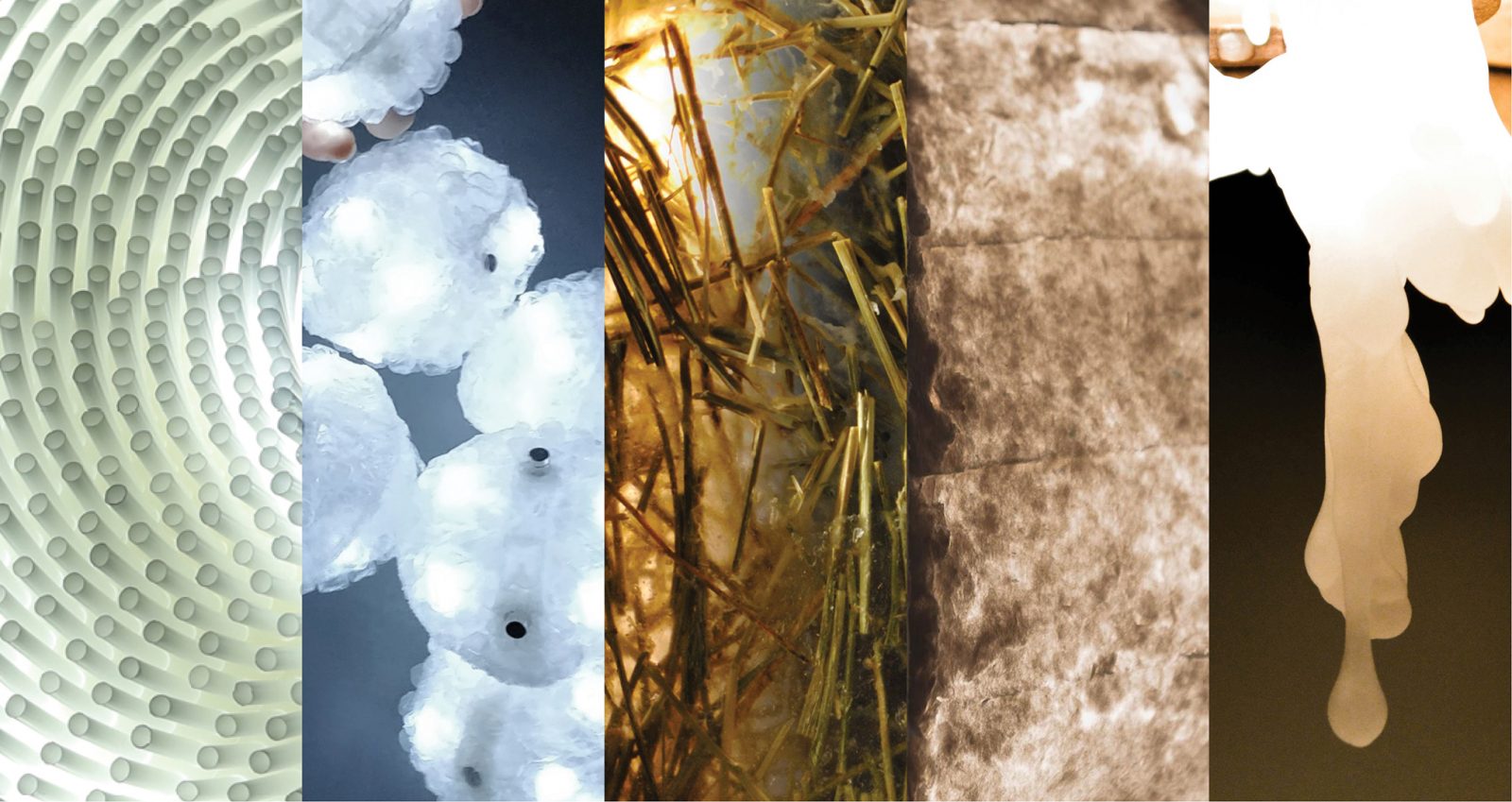
Moebius Fixture
Material Exploration: Drinking Straws
Team: Josh MacDonald & Ethan Shwartz
Fabricated from photopolymer resin, 3D printed using the Form2 SLA printer and drinking straws. The Moebius Fixture capitalizes on the capabilities of stereolithography printing to create the unique shape of the Moebius strip. Using computation design, the Moebius strip is turned into a perforated framework to give a new use to an everyday object—the drinking straw. Studies were done into lighting quality, connection details and form finding to result in the final design.
As a result of its unique form and textured design, the lamp is proposed to be marketed to high energy and innovative businesses found in start up tech companies. A secondary proposed market, follows the lead of well-acclaimed company IKEA. Due to its method of fabrication, the Moebius Fixture is able to be pieced together in parts, with easy assembly it can be targeted to contemporary home environment.

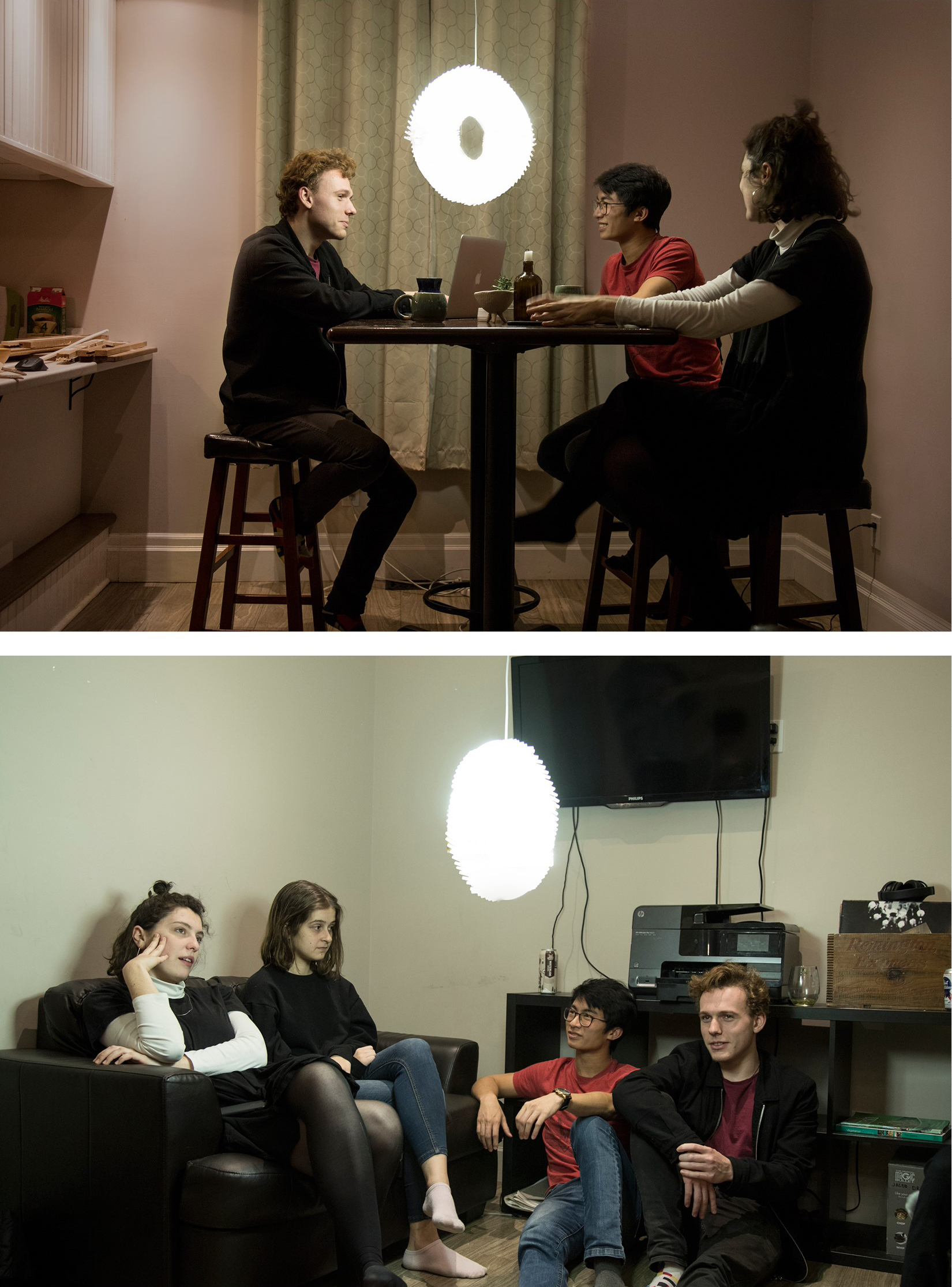

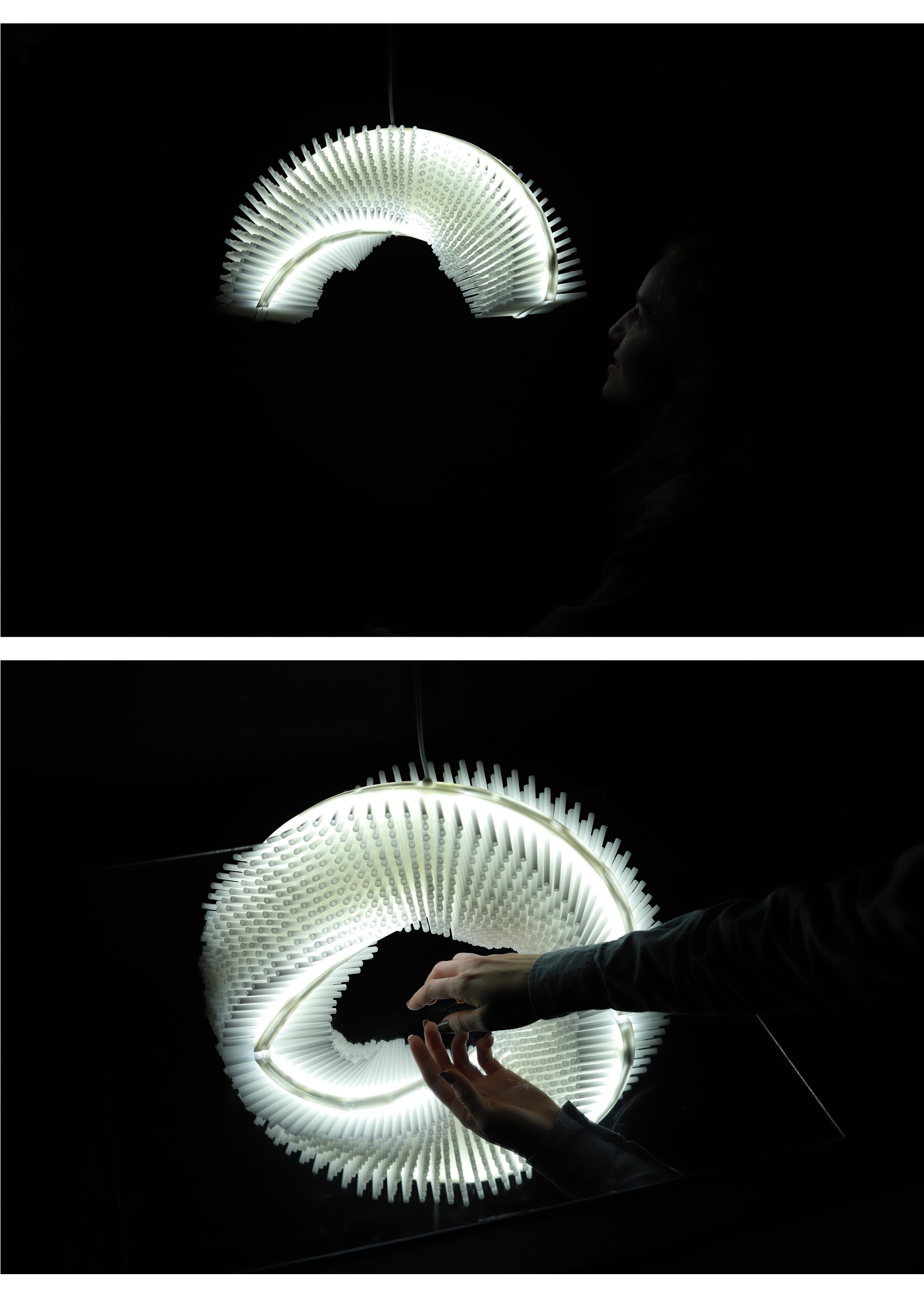
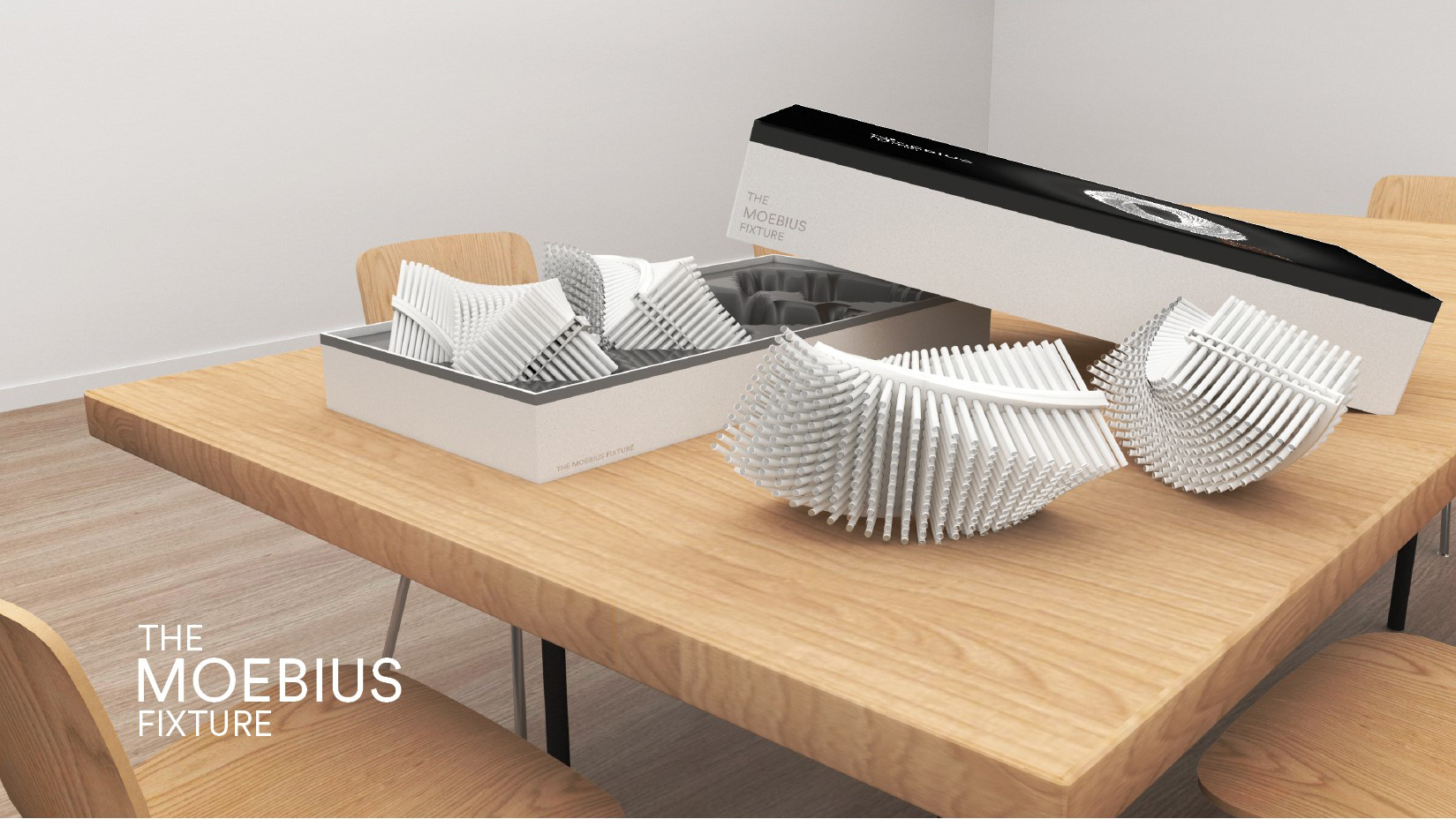
Bubble Bubble Lamps
Material Exploration: Bubble Wrap
Team: Daniel Abad & Jonas Chin
Bubble Wrap! Pop Pop! Bubble wrap begs to be interacted with. A lamp made out of this material stands no chance as a display item. This lamps exploits two properties of the material, its bubbly texture as a palpable appeal and its inherit material depth through layering to diffuse light. We set out to create an object that can be thrown, squished, popped, crushed, hugged, or assembled into any shape. In order to create individual compact modules, we created an foldable lattice structure which printed flat on an FDM printer, this allowed us to quickly prototype and produce various structures where we could fit our light circuitry, switches and magnetic links. The individual modules are toggled on/off with pressure and though magnetic links, several bubbles can be assembled into any shape.
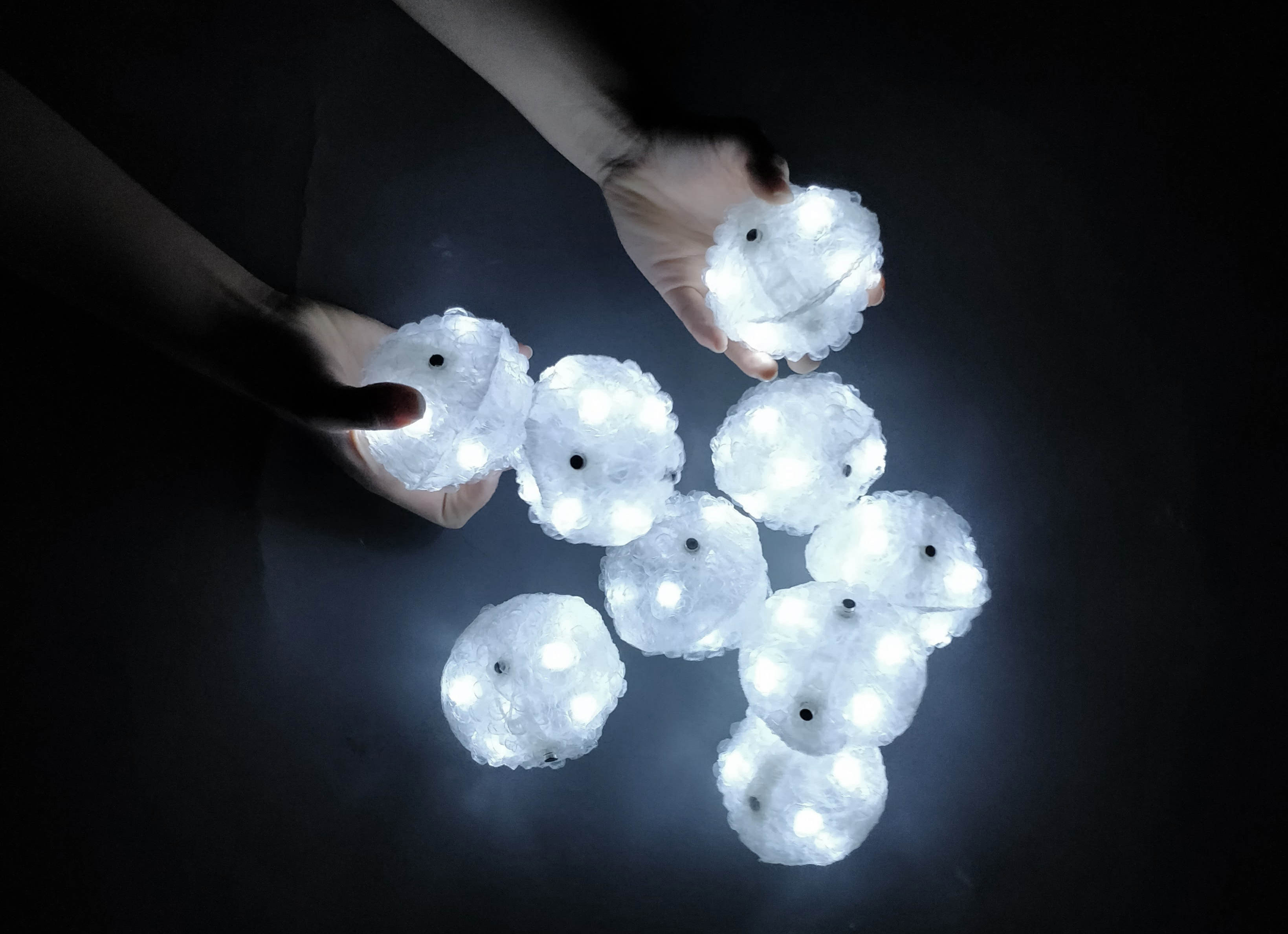
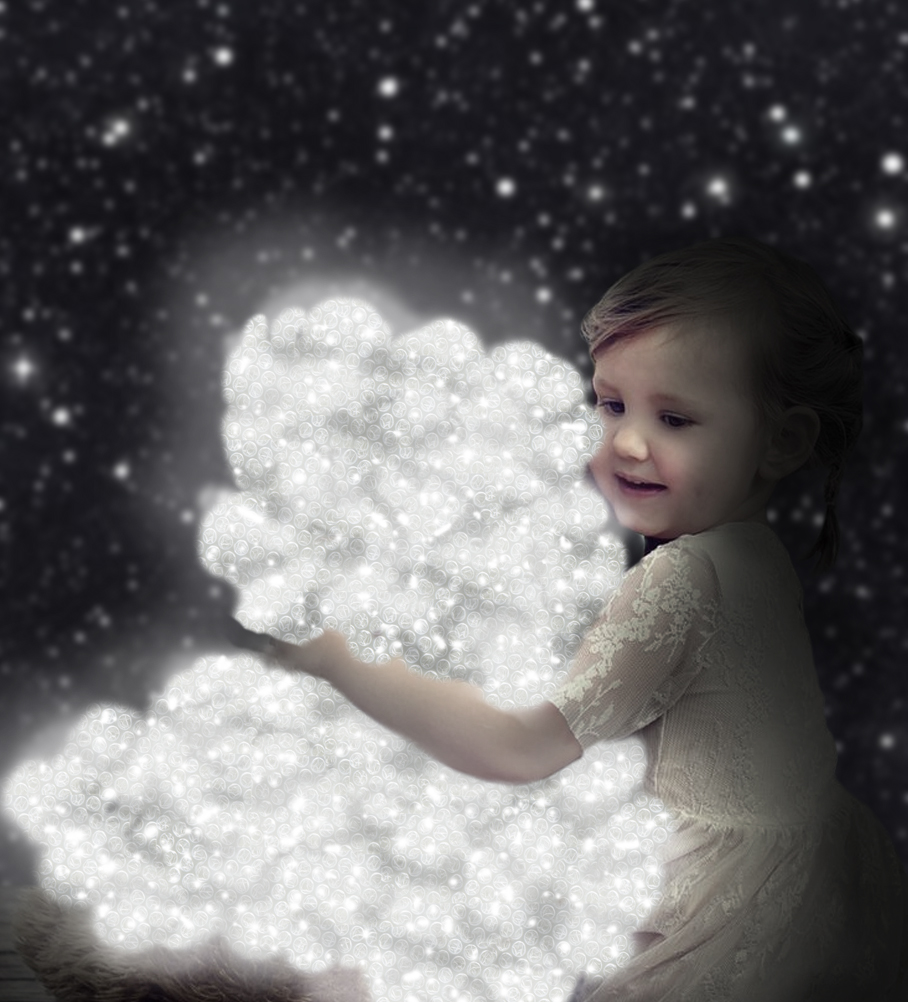
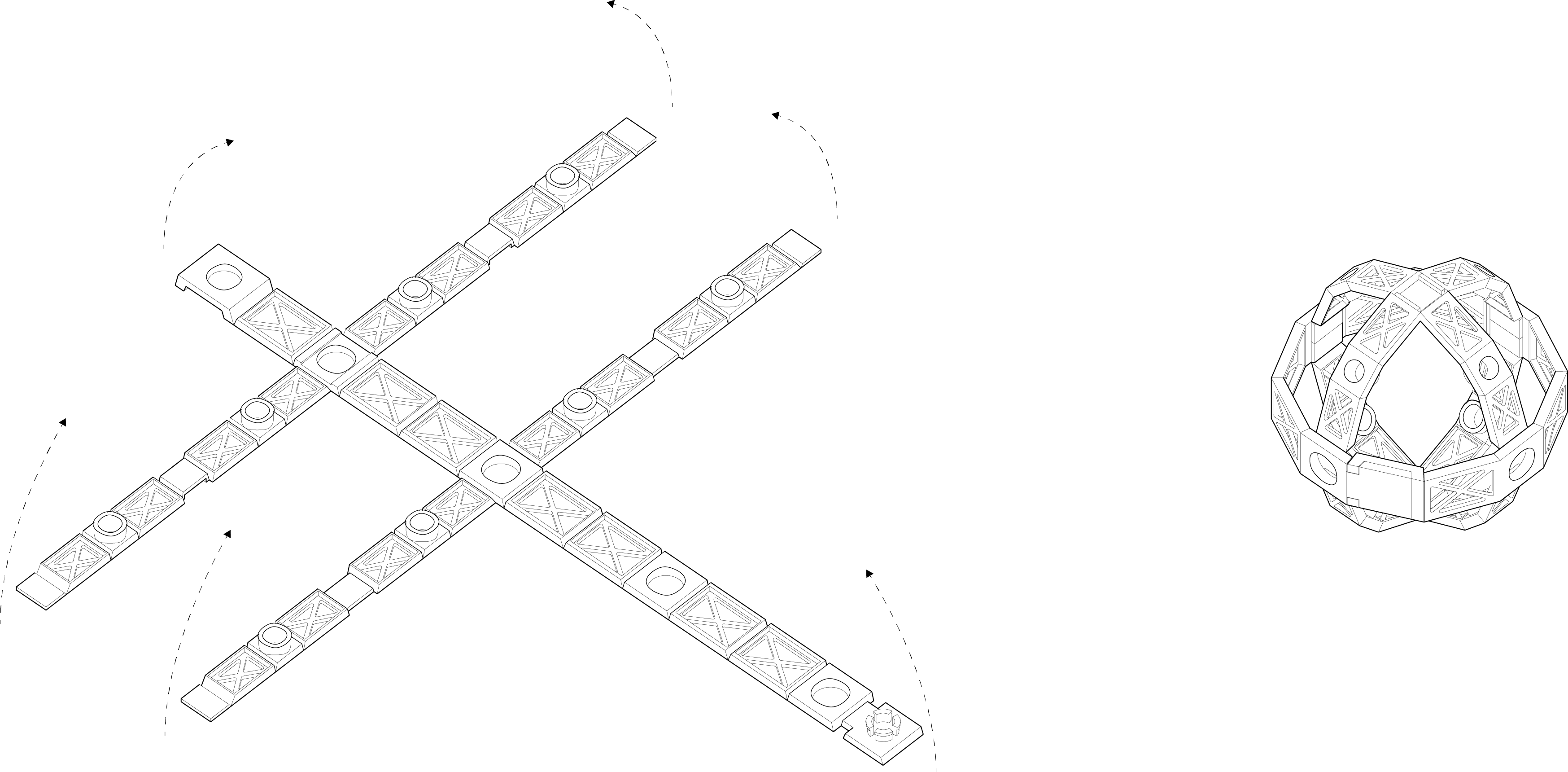
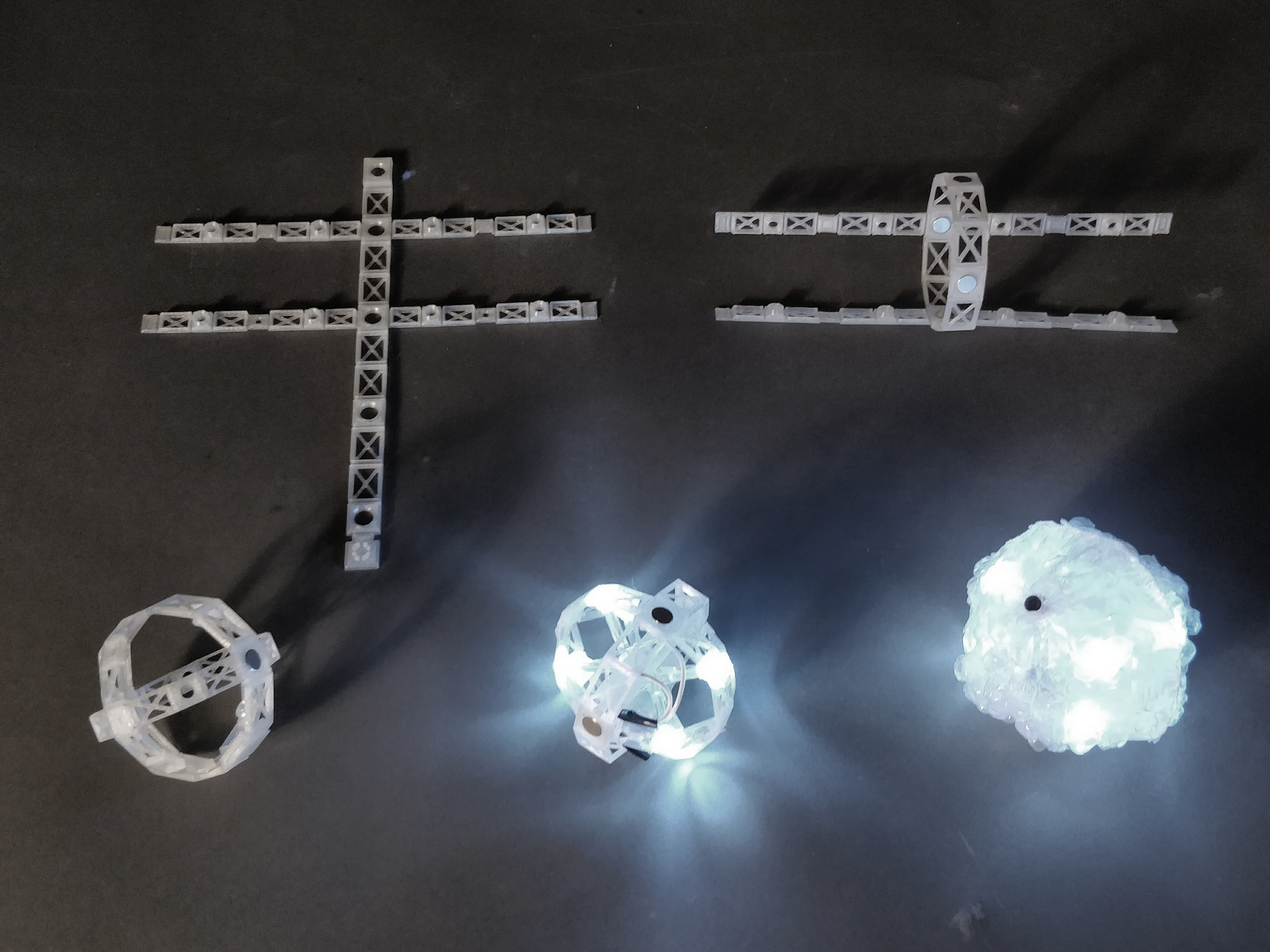
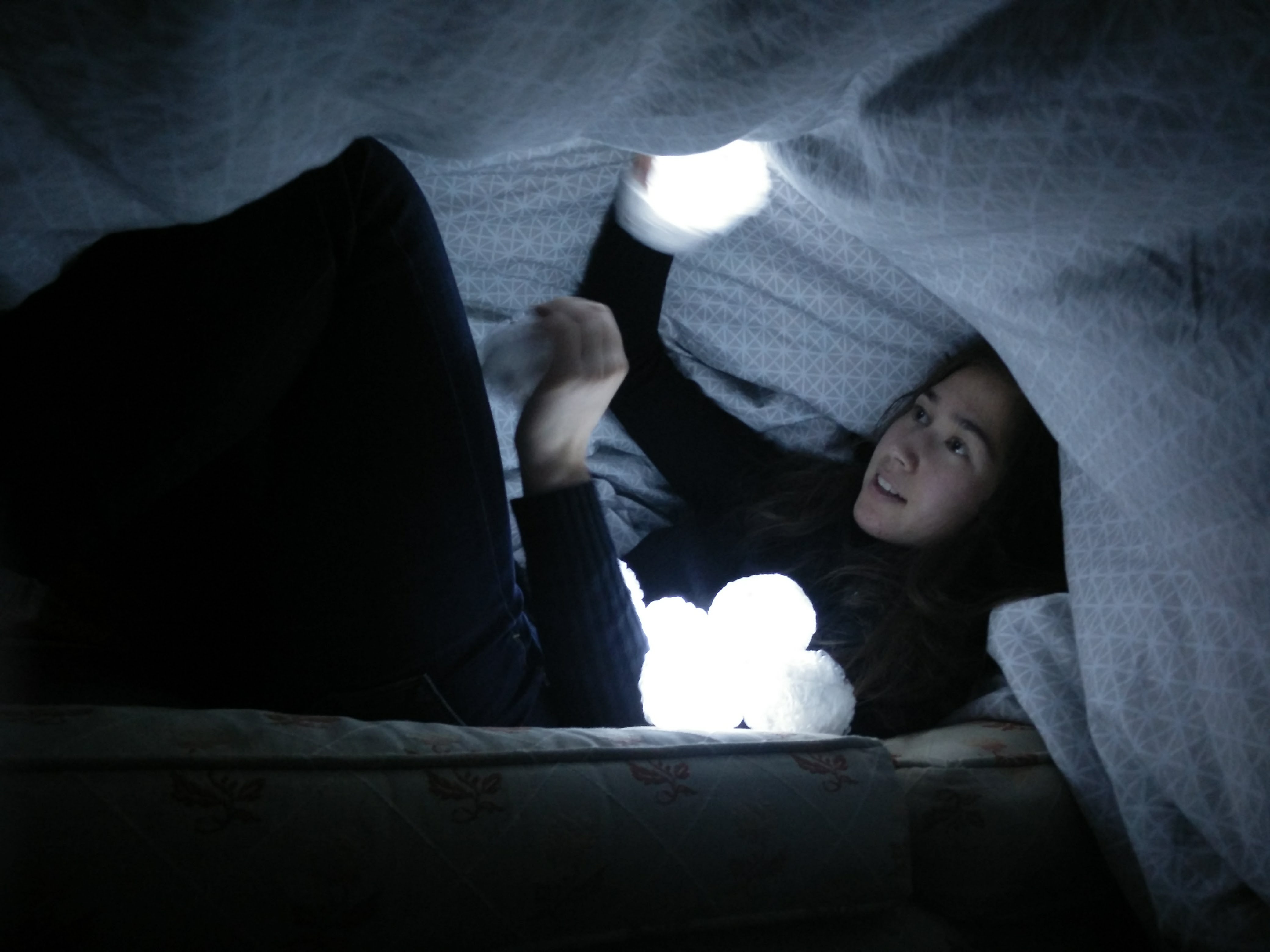
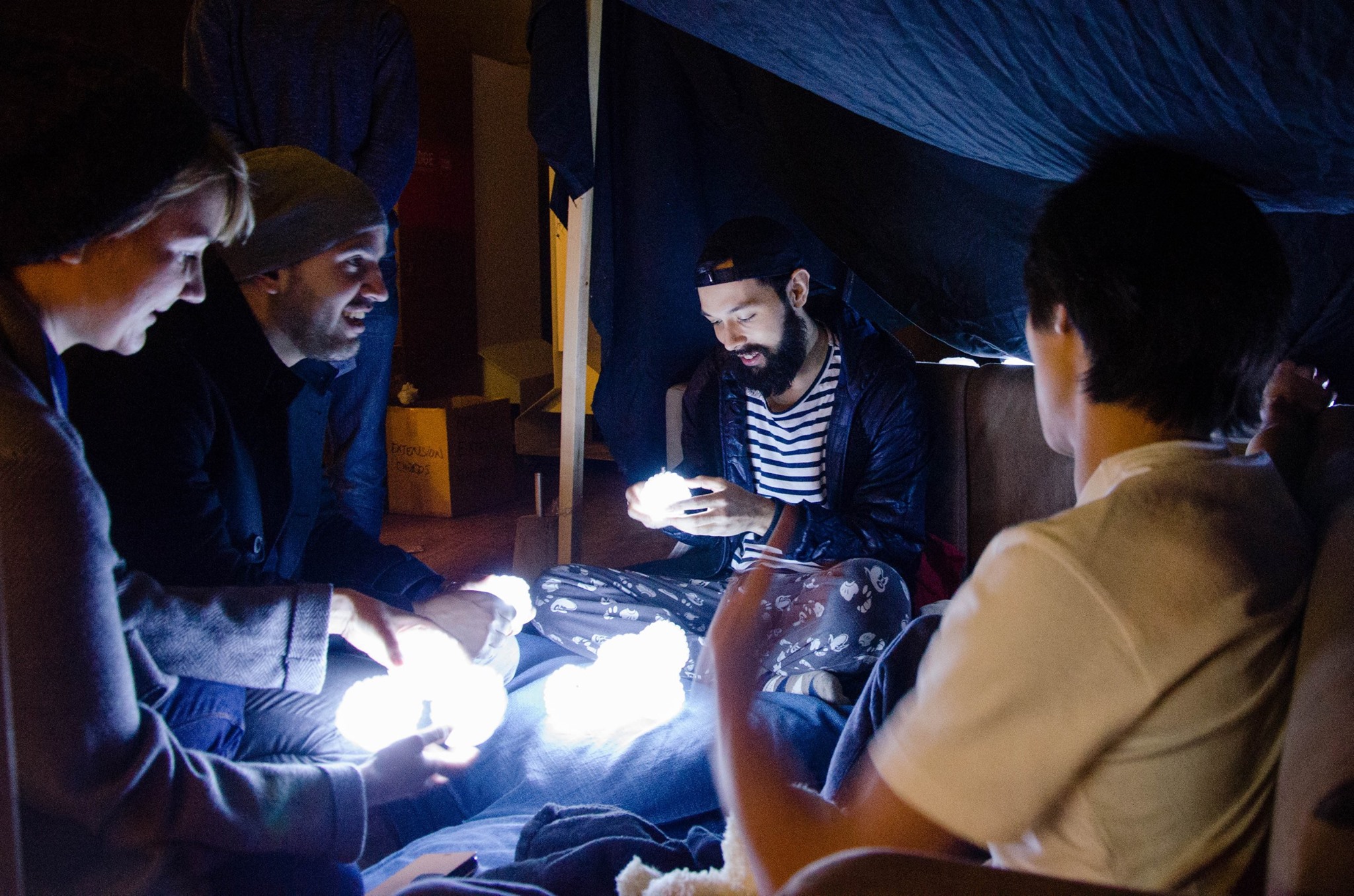
Decay
Material Exploration: Hay
Team: Matthew Barker & Mark Fraser
Hay is inherently chaotic and the goal in this design was to control the chaos by forming the hay into in a perfect geometric form, while revealing this chaos at specifically controlled points. The lamp was designed to combine a plant and a light, both common accessories in cafes and restaurants, into a single object.
The hay was first collected from a bale then sorted to collect only ryegrass stalks, which were later cut into pieces of varying lengths. The lamp was constructed by filling an acrylic mold with the pieces of hay. Two faces had a thin layer of wax poured over them and the rest of the mold was filled with an epoxy resin. Once the cast had cured, the wax was melted to reveal some of the hay while leaving the majority encased in the resin. A LED light was used for the light source. The result is a lamp that looks like a dense block of hay with the light off, but a mood light expressing the chaos of the hay when the light is on.
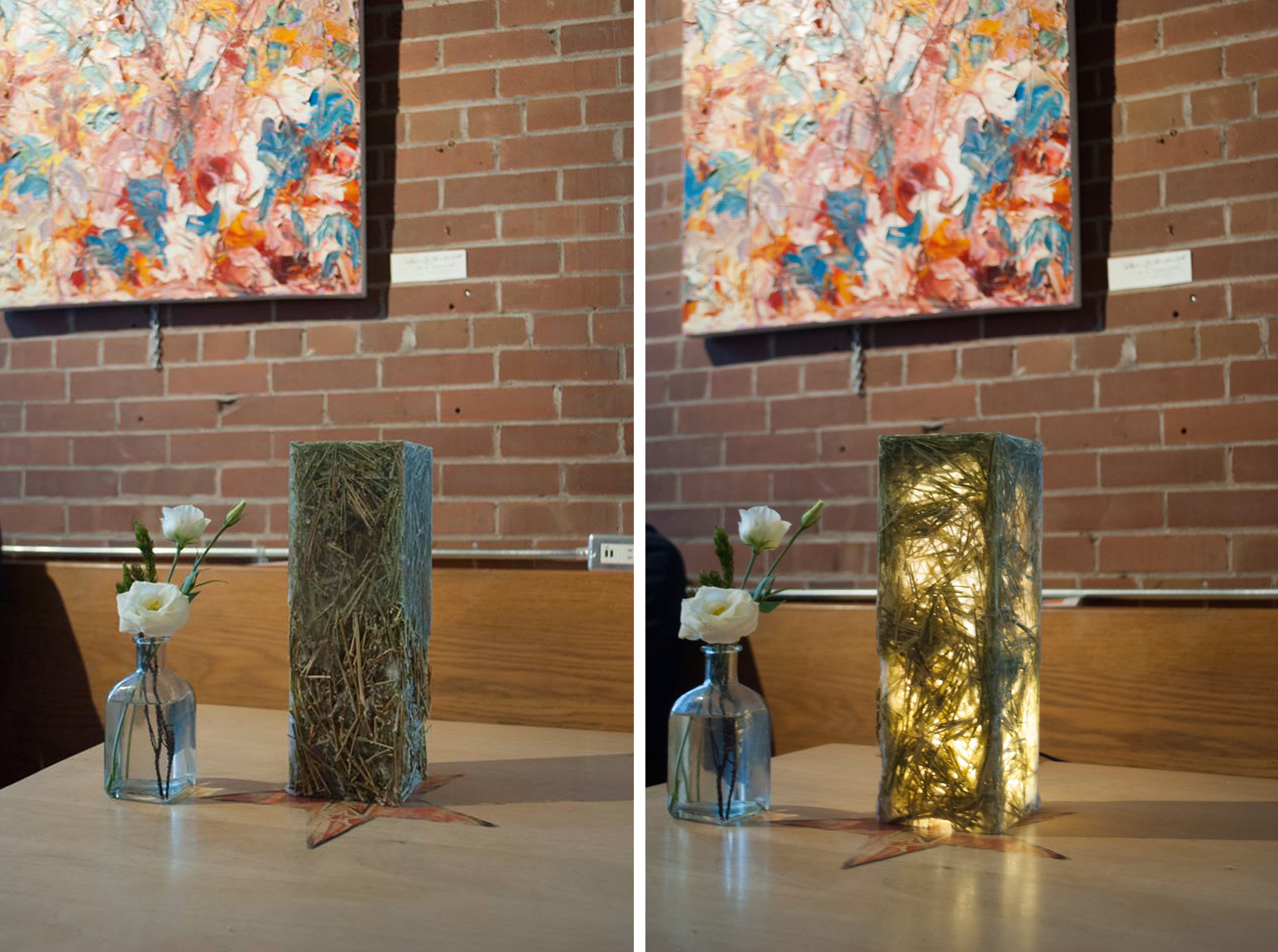
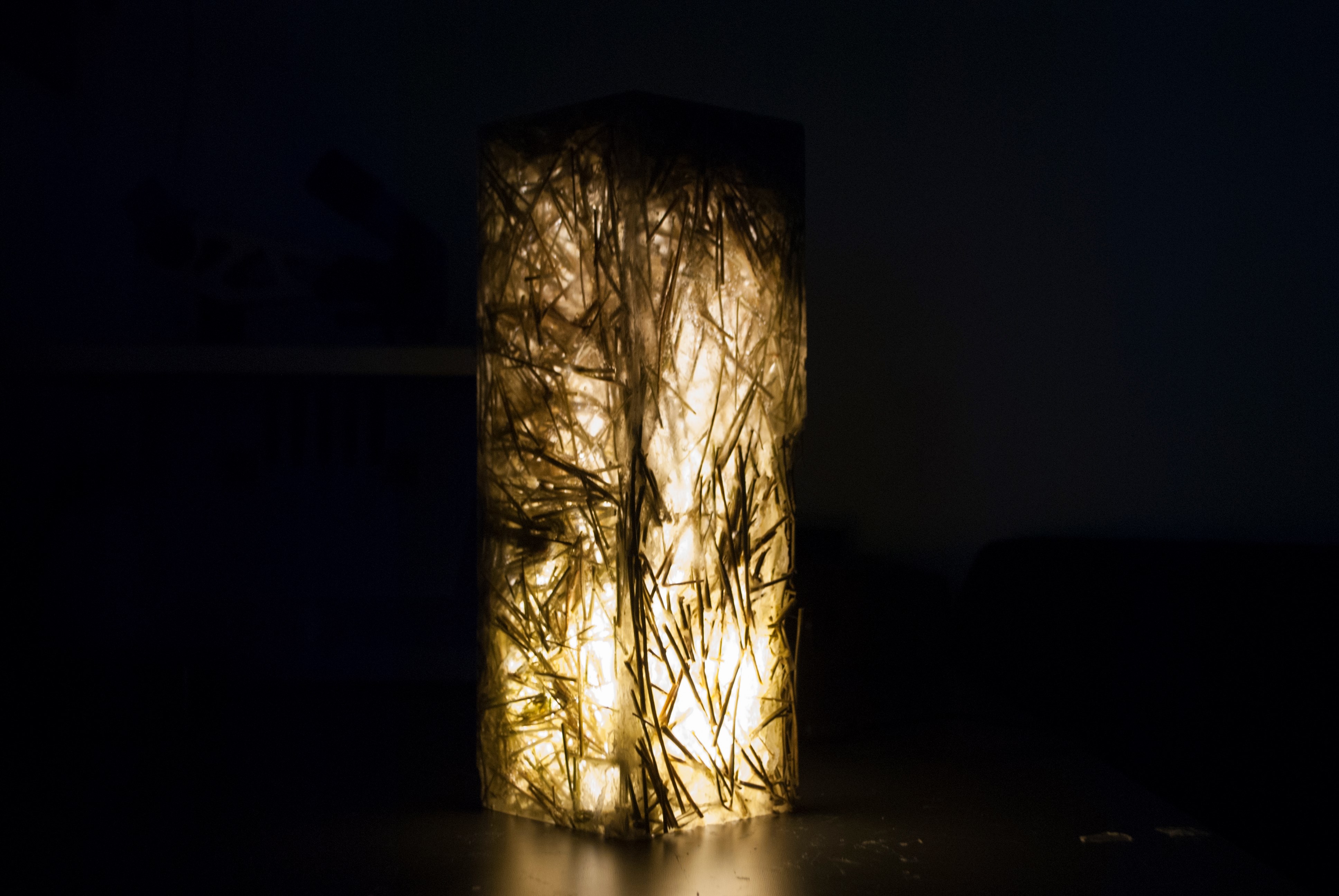
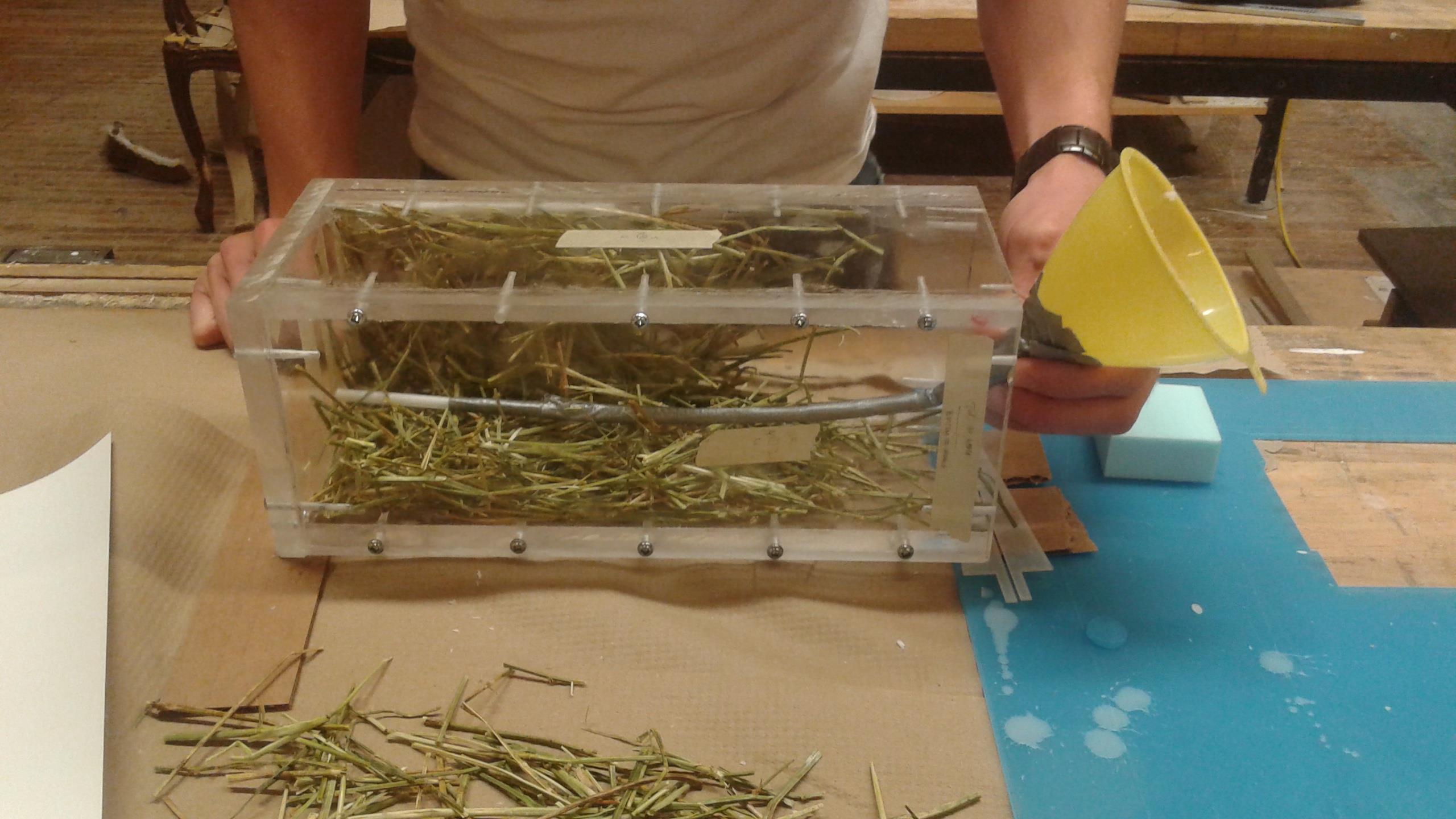

Cotton
Material Exploration: Paper
Team: Tak Yi Leung & Raymond Fan
Paper is an age-old material used in the making of lanterns owing to its thin and light-weight yet strong material properties. Paper is composed of cellulose which can be extracted from various plant-based materials—one of which is cotton. The structure of paper is influenced by the interaction of microfibrils in the cellular structure. Cotton’s microfibril orientation gives it greater tensile strength than conventional wood-pulp based papers.
This lamp explores paper’s capacity to decompose and recompose by manipulating the density of cotton linter fibres. The high density of fibres in the ribs gives the lamp its structure and rigidity, which not only supports itself but also supports the central core housing the lightbulb. The thinner layers of paper diffuse the light to accentuate the textural qualities of the paper.

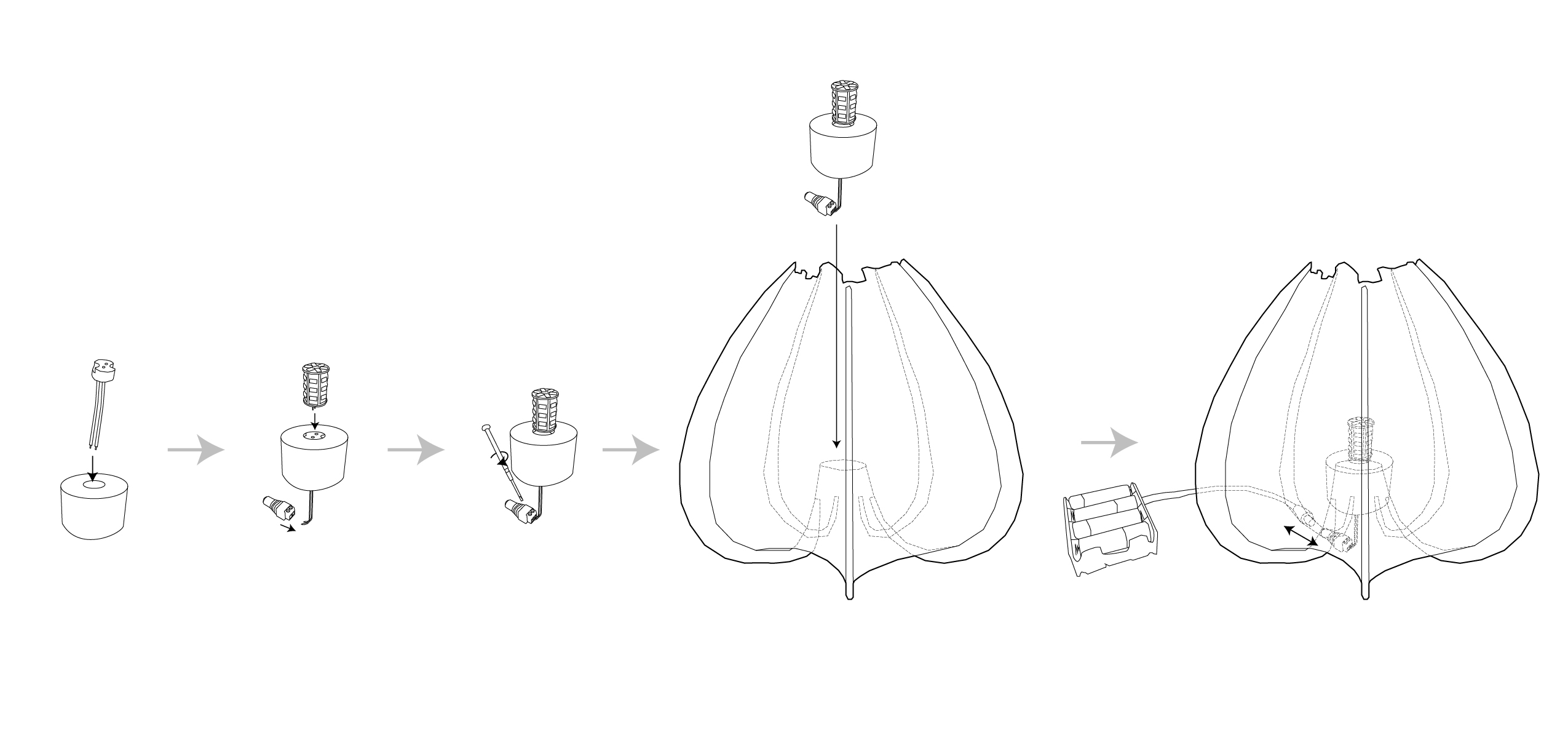

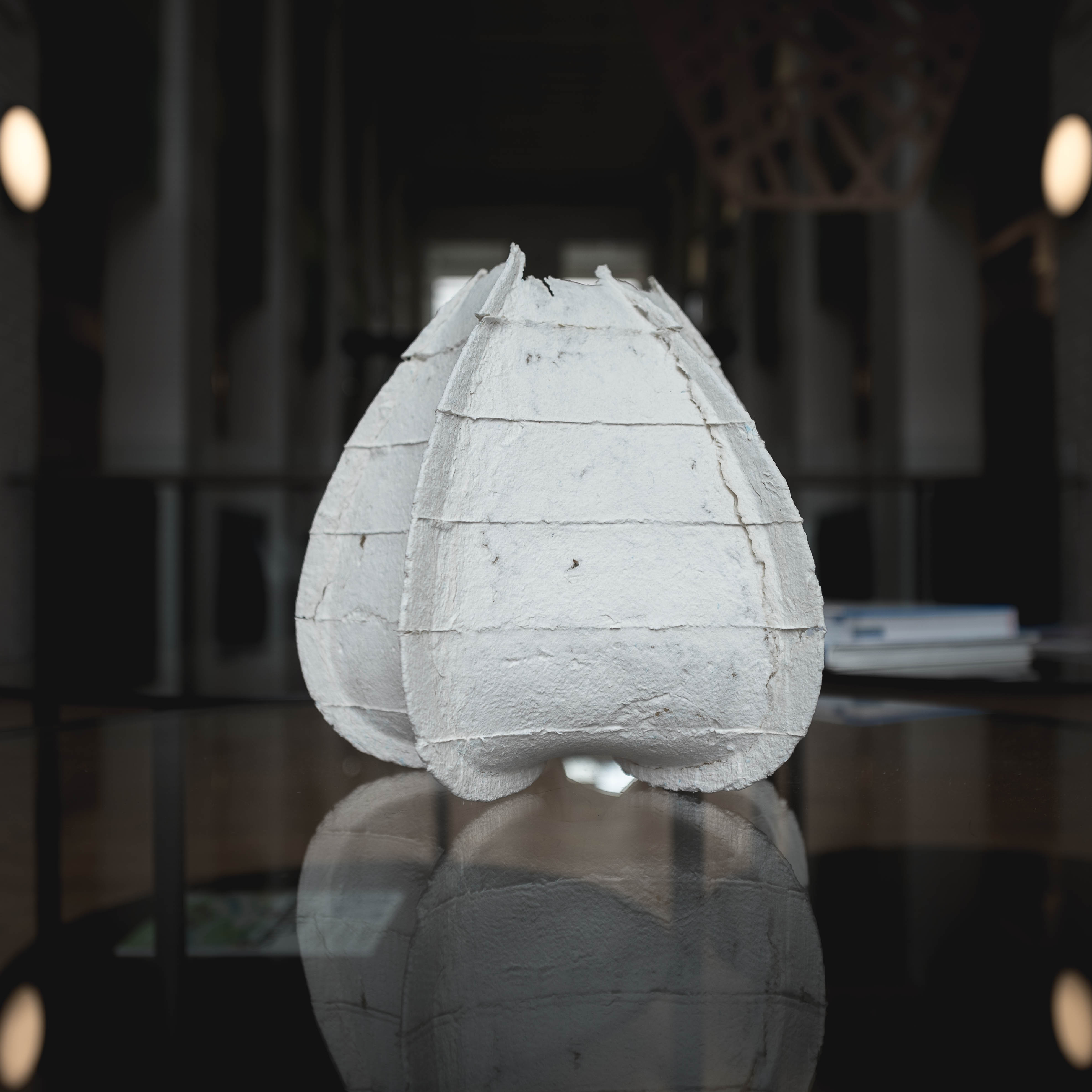
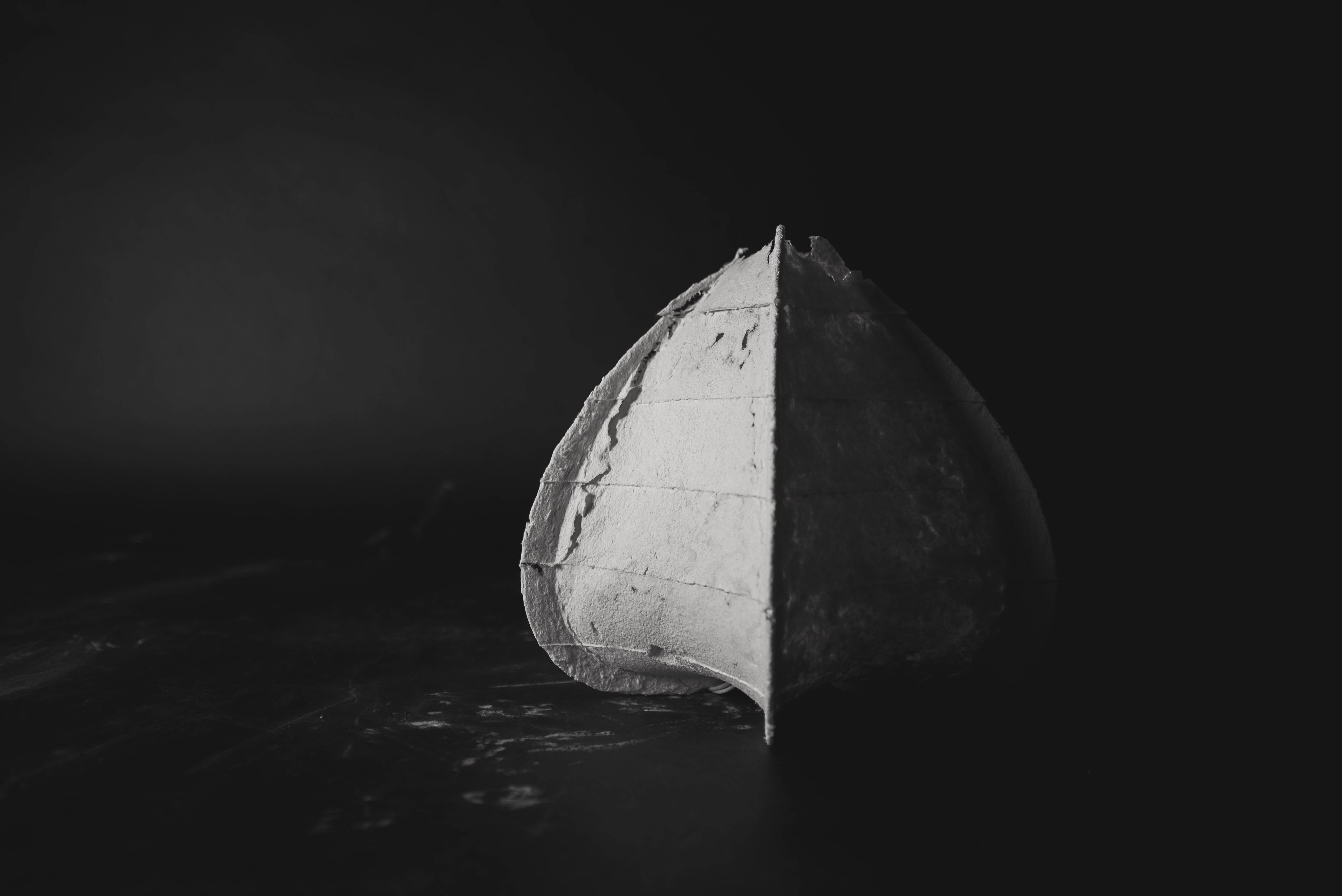
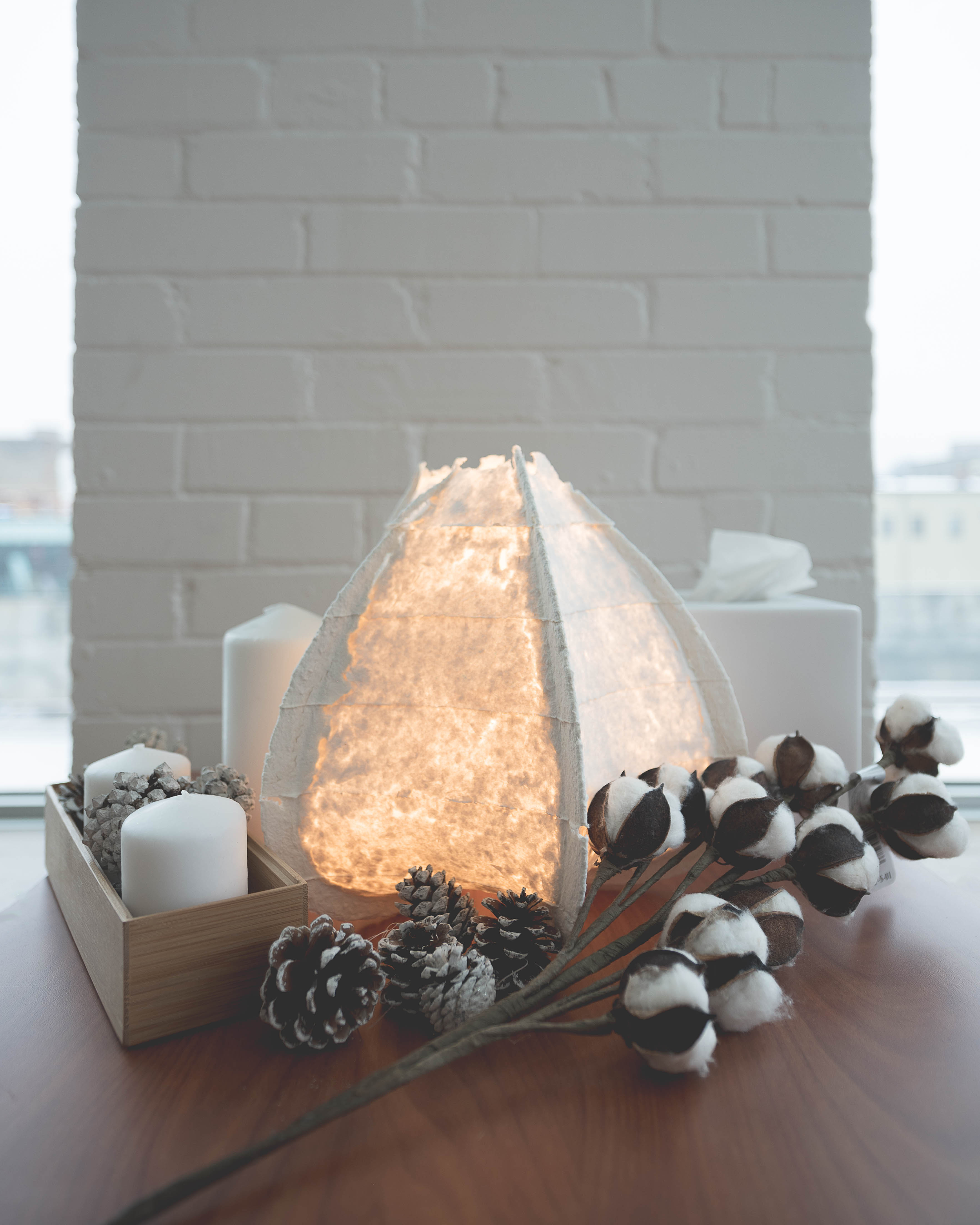
Kronos
Material Exploration: Wax
Team: Ammar Ghazal & Marius Hexan
The lamp is a circular frame made out of a wood sheet product, the shape was laser-cut through custom cross sections to contain a ring of solid wax. The contact from the bottom of the lamp activates the top incandescent bulb, prompting a process of subtraction and deposition though the melted wax. Two metal rods are used as a base for the lamp, which discretely connect the fixture to its host table though two nails heads.
This lamp uses the slow radiation of the embedded bulbs to turn the wax into a sculptural timekeeping apparatus. Rather than representing time through subdivided measurable units, the passing of time is shown through the creation of unique stalactites through each rotation of the disk. Time does not pass, it accumulates.
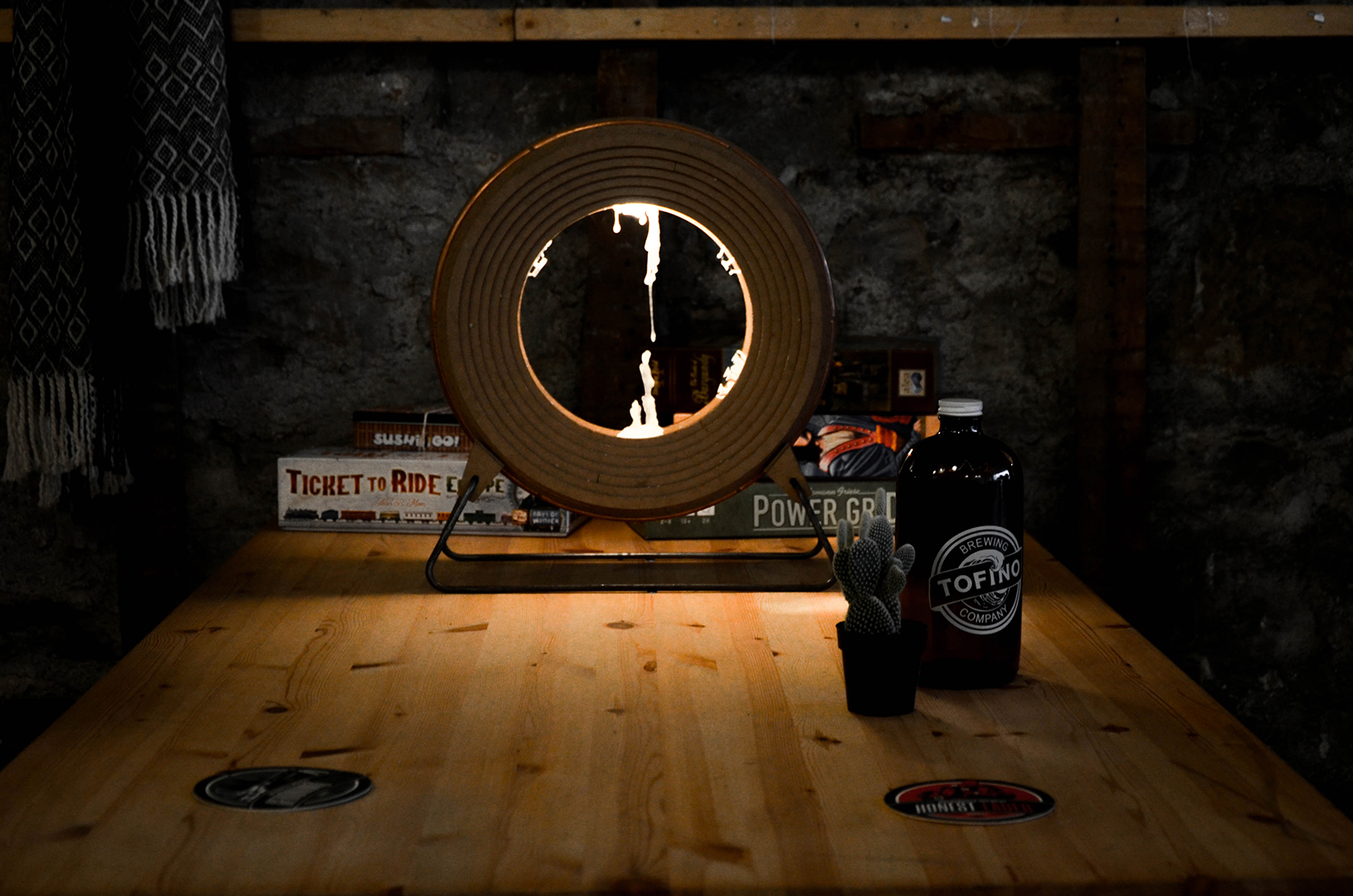
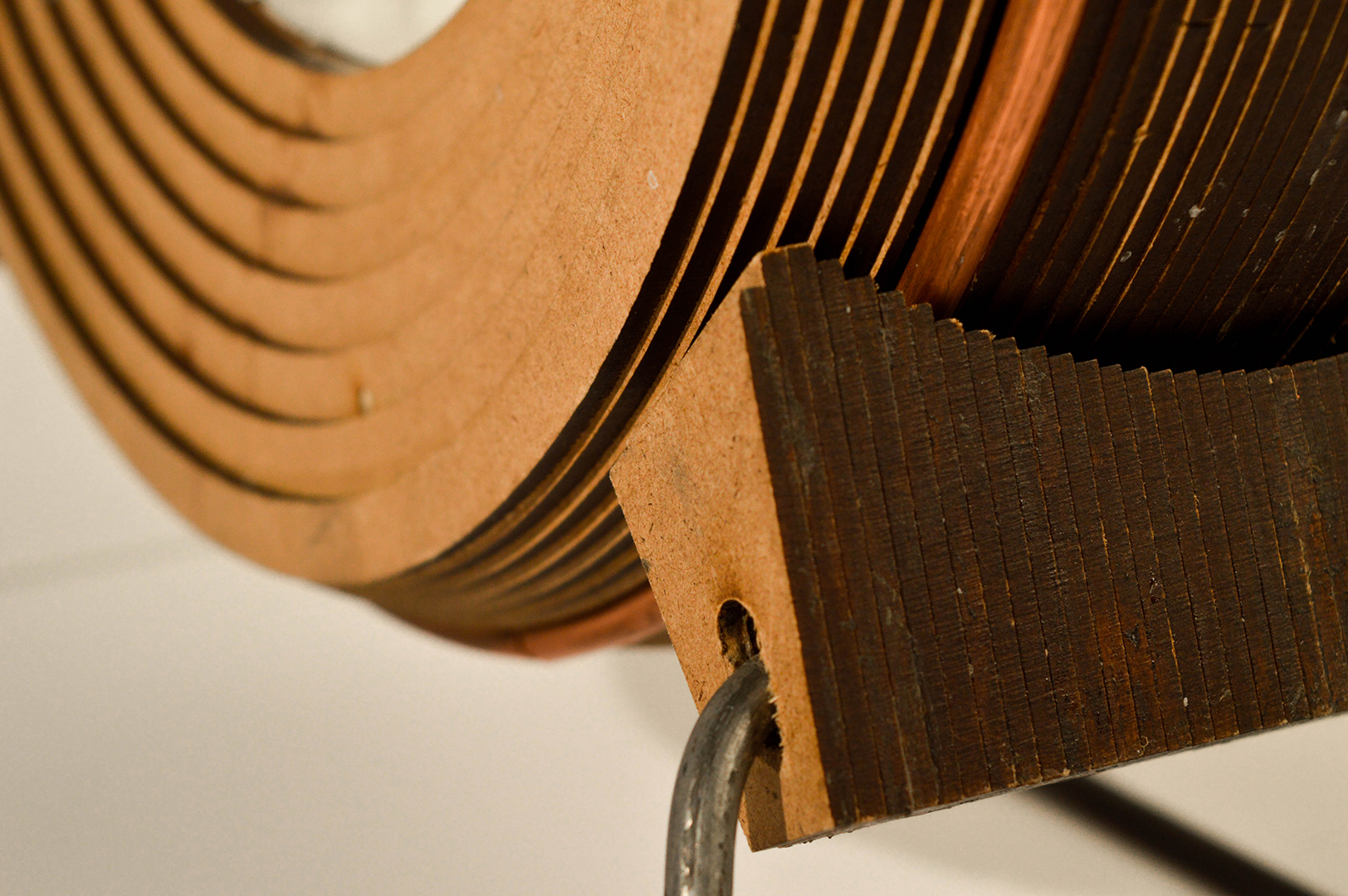
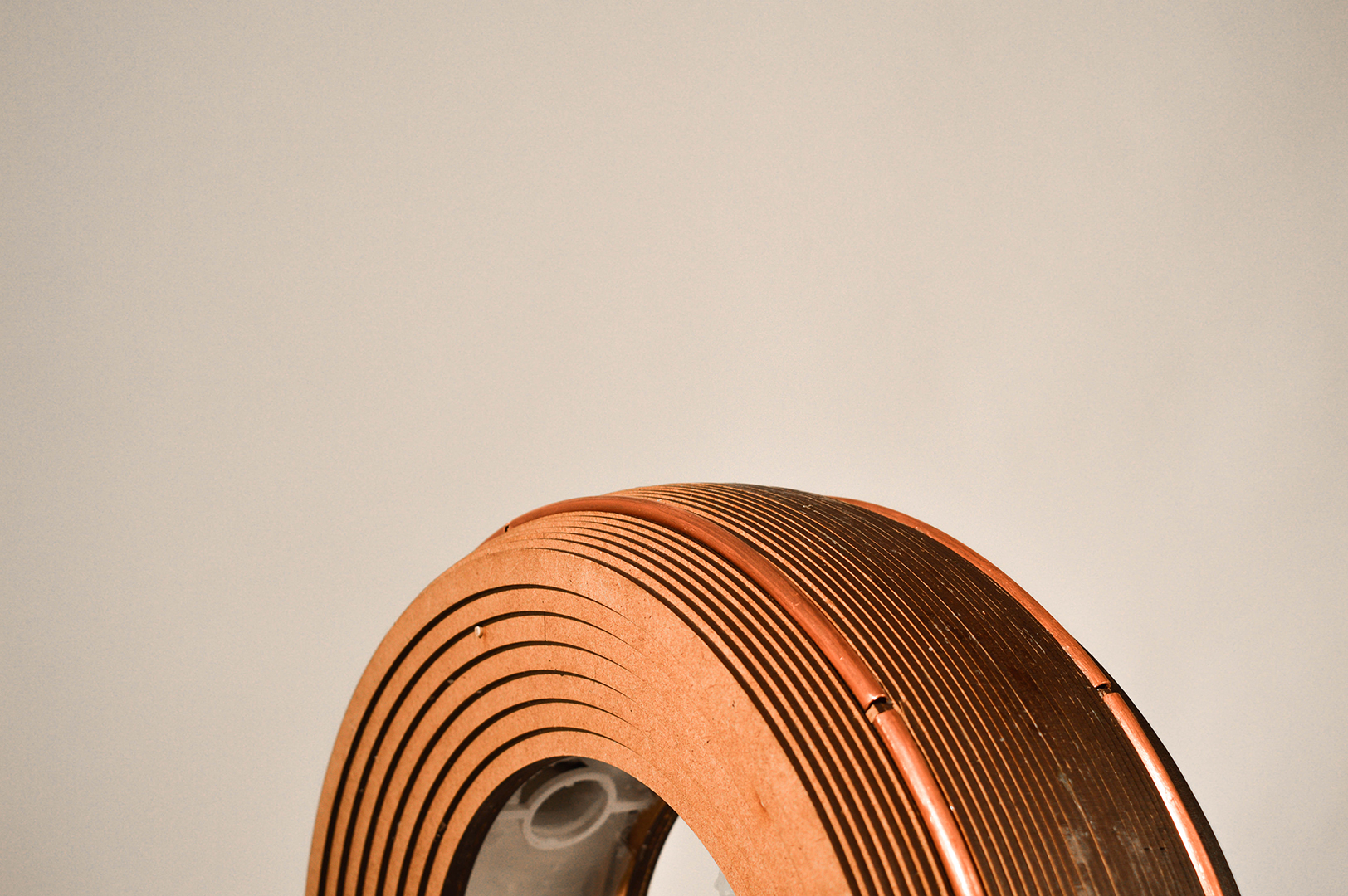
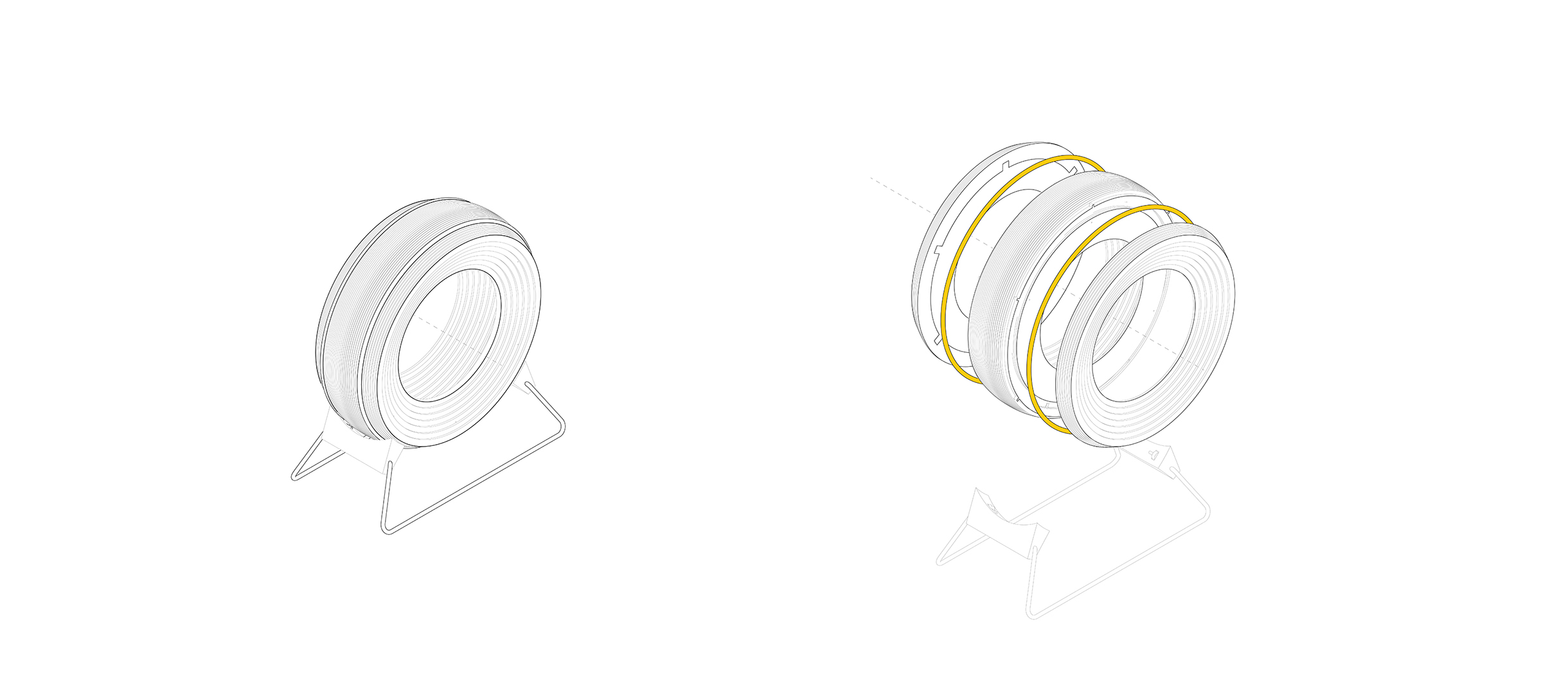
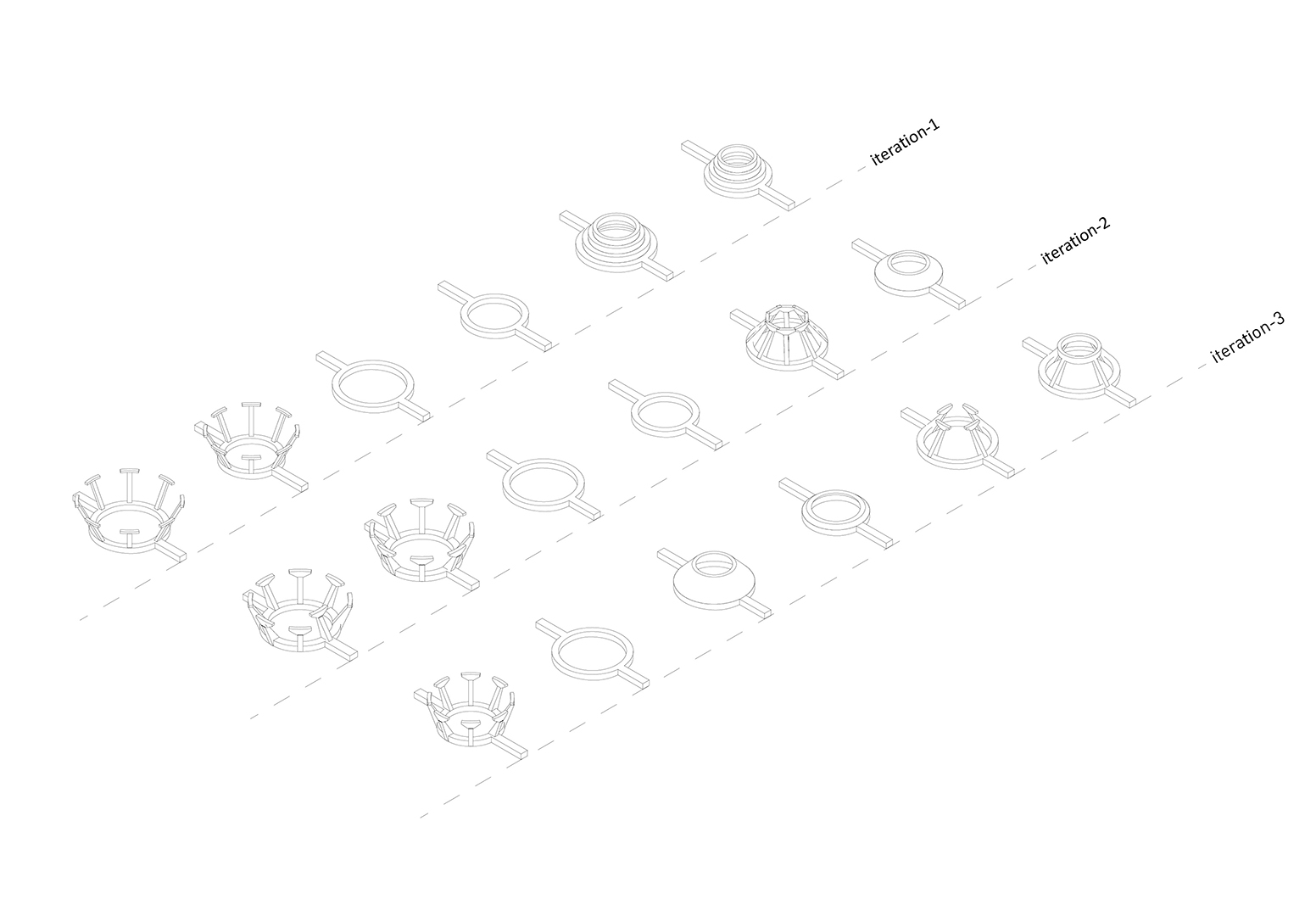
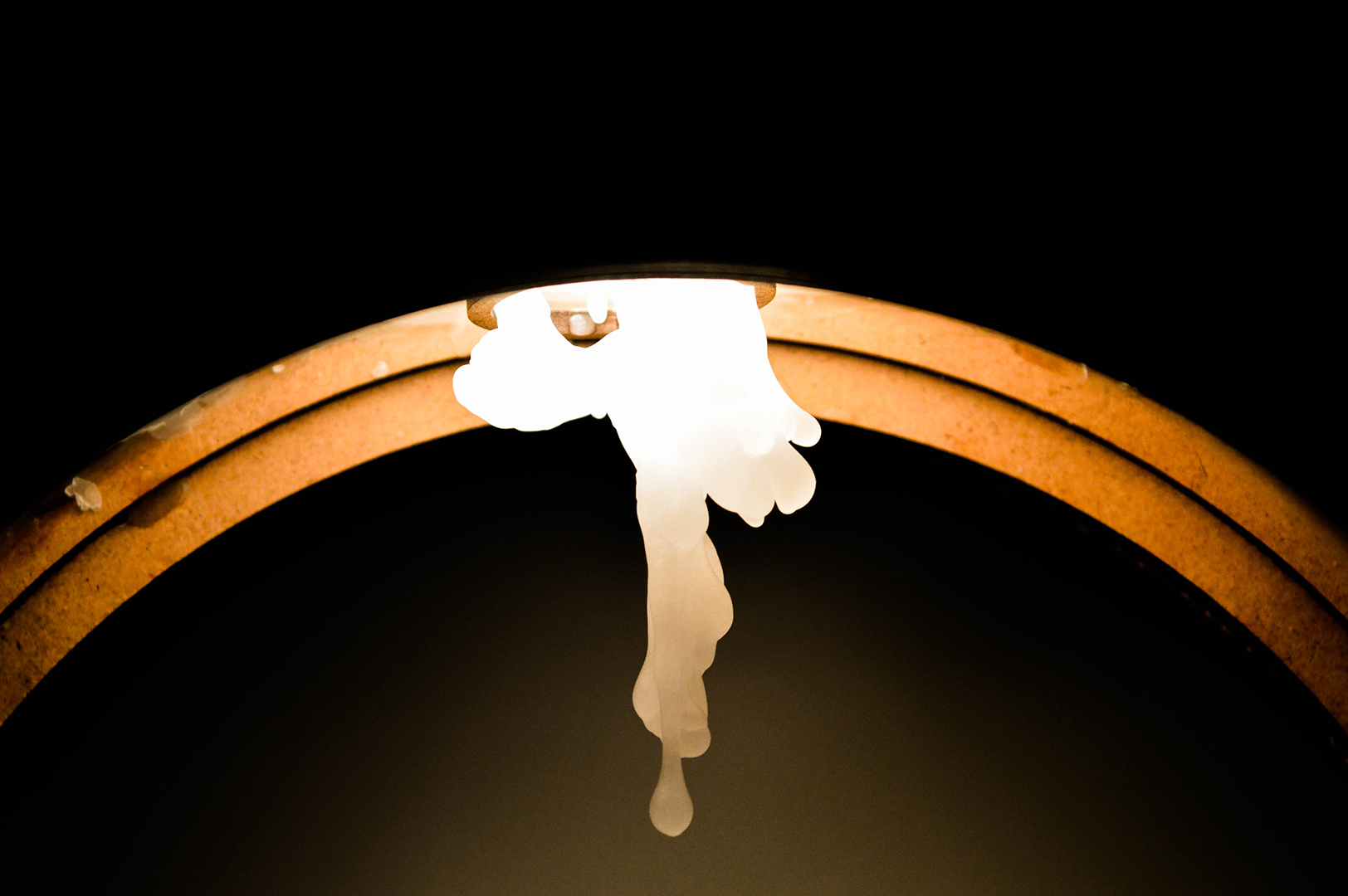
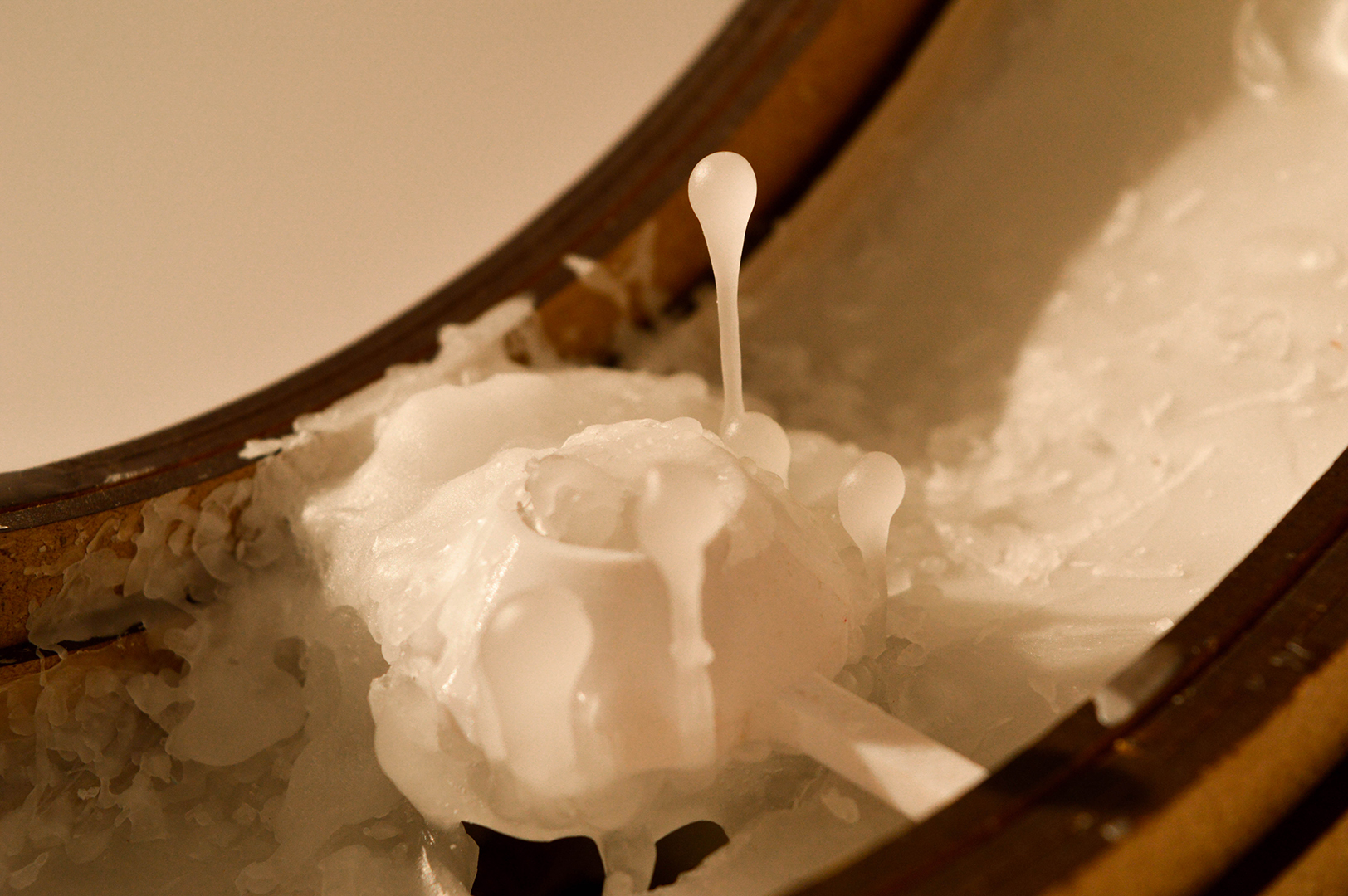
Daniel Abad is a M. Arch candidate student at the University of Waterloo. He is studying the relationship between monumentality and apparatuses of the state in the urban fabric of Mexico City. Daniel also a Director of BRIDGE Centre for Design + Architecture.


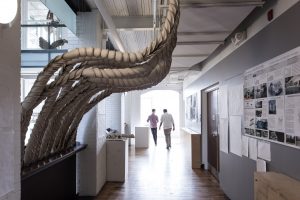
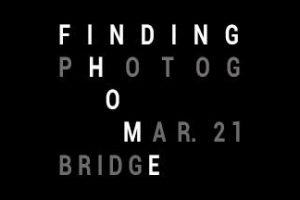
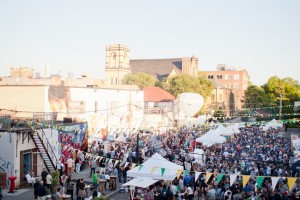
Leave a Reply